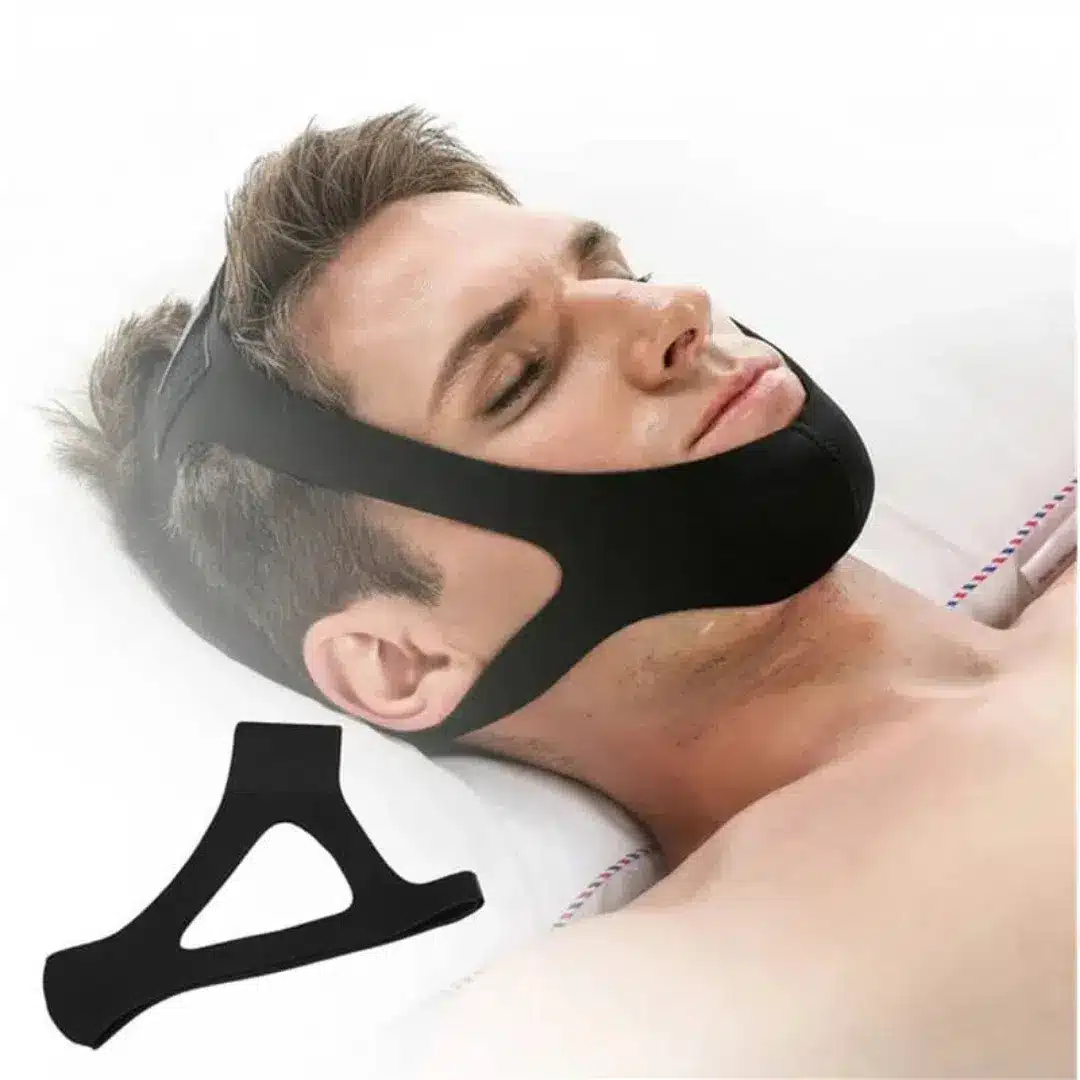As a health professional with years of experience in sleep medicine, evaluating innovative solutions for common problems such as snoring and sleep-related breathing issues is both my duty and passion.
Recently, I tested the AirFlow Jaw Strap—a chin strap device designed to reduce snoring, encourage nasal breathing, and potentially support those with mild sleep apnea.
In this review, I’ll share my firsthand observations, touching on comfort, effectiveness, clinical considerations, and my overall takeaway after several weeks of use.
Table of Contents
Unboxing and Initial Impressions
From the outset, the AirFlow Jaw Strap impressed me with clear, concise packaging and thoughtful design. The strap arrived neatly folded, with a simple set of instructions. Materials were soft and lightweight to the touch, giving the impression of both comfort and durability.
Upon inspection, the device featured:
- A wide, supportive band to cup the chin
- Adjustable Velcro straps to fit various head sizes
- Breathable, hypoallergenic fabric
As someone who regularly advises patients with different sensitivities and preferences, I was pleased that the jaw strap avoided rough seams and scratchy fabrics. Cleaning instructions indicated it could be hand-washed and air-dried, a convenience for users concerned about hygiene and longevity.

Fitting and Comfort
Proper fit is essential for any medical device worn overnight. I adjusted the strap according to the instructions, ensuring it was snug but not tight. The adjustable design allowed for a custom fit—an important factor for lasting comfort throughout a full night’s sleep.
During my initial trial, I noted:
- The chin support cradled the lower jaw gently, avoiding undue pressure or discomfort.
- The head straps distributed tension evenly, reducing the likelihood of pressure points or headaches.
- Fabric breathability prevented unwanted heat build-up, which can be an issue in Hong Kong’s humid climate.
Even after several hours of continuous use, there was minimal slippage, and the jaw remained comfortably closed, supporting nasal airflow without feeling restrictive.
User Experience Over Two Weeks
Night 1-3: Adaptation Phase
Like most users, I needed a night or two to get accustomed to the sensation of wearing a jaw strap. The AirFlow proved user-friendly from the outset. The material felt soft, and I experienced no facial irritation—an important consideration for sensitive skin. By the third night, the AirFlow became nearly unnoticeable, blending seamlessly with my regular sleep routine.
Night 4–14: Assessing Effectiveness
I focused my evaluation on three key aspects:
1. Reduction in Snoring
Using both self-monitoring and input from my partner, I tracked the frequency and intensity of snoring episodes. Remarkably, my snoring diminished significantly after just a few nights, corroborated by sleep tracking apps and subjective reports. The gentle forward positioning of the jaw kept my airway open, effectively reducing obstructions commonly responsible for snoring episodes.
2. Quality of Sleep and Morning Alertness
Sleep felt less fragmented. I woke up feeling more refreshed and energetic. Subjectively, there was less morning grogginess and an absence of notorious “dry mouth” episodes often associated with mouth breathing.
3. Adjunct to CPAP Therapy
On several nights, I paired the AirFlow Jaw Strap with a CPAP machine. The combination minimized air leaks from the mouthpiece and further improved comfort, supporting clinical observations that chin straps can bolster CPAP effectiveness, particularly in users who struggle with mouth leaks.
Clinical Considerations and Observations
From a clinical perspective, chin straps like the AirFlow Jaw Strap have a specific role. They’re particularly helpful for:
- Individuals with positional snoring or mild sleep apnea aggravated by mouth breathing.
- CPAP users seeking to minimize mouth leaks and discomfort.
- Those who want a non-invasive, medication-free way to promote nasal breathing.
I noted no significant side effects during my trial. While some users may experience minor jaw tension or adjustment discomfort initially, these effects typically resolve with proper strap tensioning and consistent use. It’s important to emphasize that, while many benefit from chin straps, they are not a replacement for more comprehensive treatments for moderate to severe sleep apnea, such as CPAP or mandibular advancement devices.
Practical Pros and Cons
| Pros | Cons |
|---|---|
| Soft, breathable and hypoallergenic | Not suitable for everyone (esp. severe apnea) |
| Customizable, secure fit | May take a few nights to adapt |
| Easy to clean and maintain | Potential for initial jaw tension |
| Noticeable reduction in snoring | Requires correct positioning |
| Supports CPAP therapy | Limited standalone clinical data |
Conclusion: Is the AirFlow Jaw Strap Worth Buying?
In my professional and personal capacity, I found the AirFlow Jaw Strap a valuable tool for snoring and support in mild sleep-disordered breathing. Its design prioritizes user comfort, practical hygiene, and genuine results. Over two weeks, I experienced reduced snoring, improved sleep quality, and greater morning alertness—both with and without the aid of CPAP equipment.
While it may not serve as a standalone solution for all forms of sleep apnea, its non-invasive, adjustable, and user-friendly features make it an excellent first-line option or adjunct for many. If you or a loved one struggle with snoring or mild airway obstructions at night, I genuinely believe the AirFlow Jaw Strap is worth buying—not only for its performance and comfort but also for the meaningful improvement it can bring to nightly rest and daily life.

Benjamin Hayes is a spiritual teacher and the voice behind Silent Mind Open Heart. Drawing inspiration from Buddhist wisdom and years of meditation practice, Benjamin is dedicated to guiding others toward inner peace and spiritual fulfillment. Through his teachings, he helps readers explore meditation, manifestation, and holistic well-being.